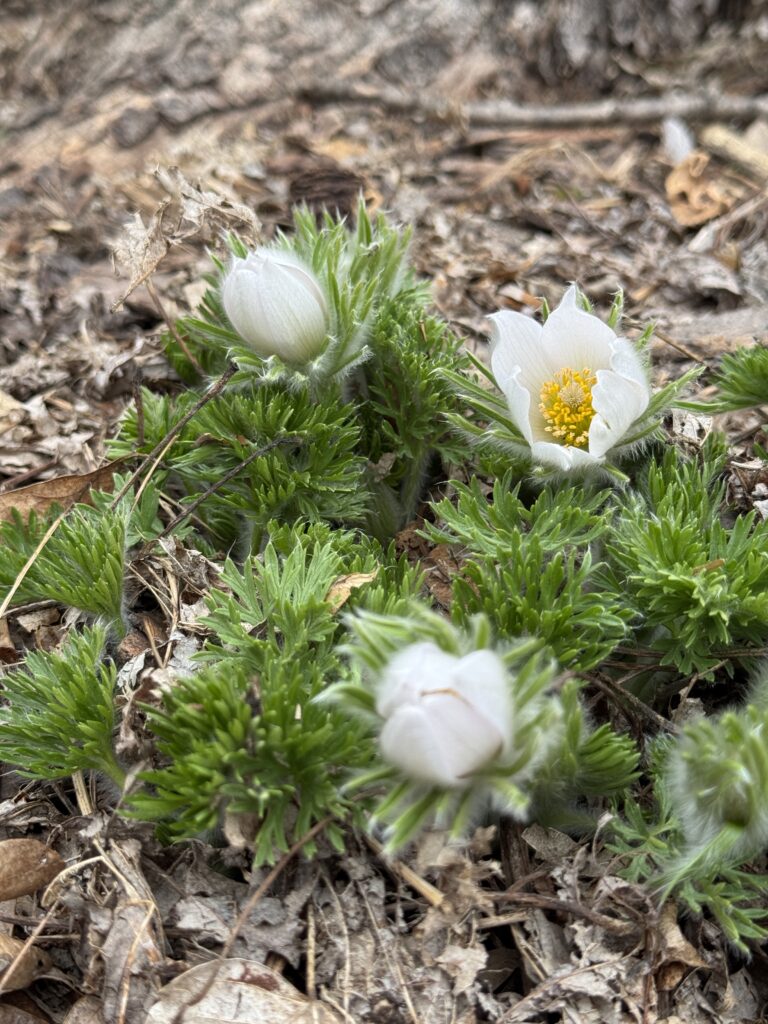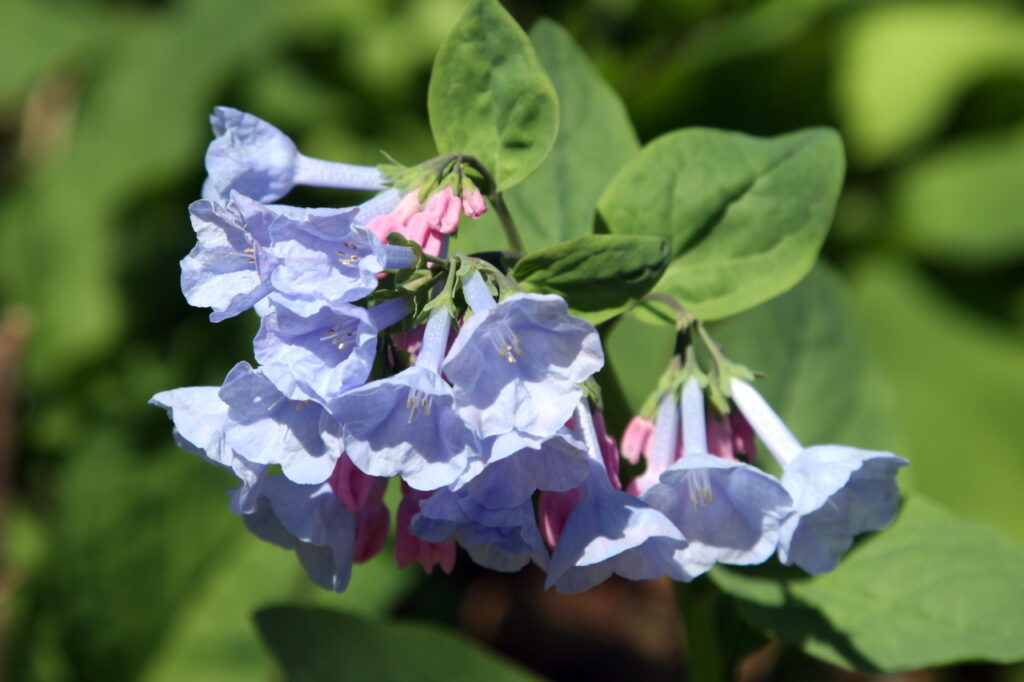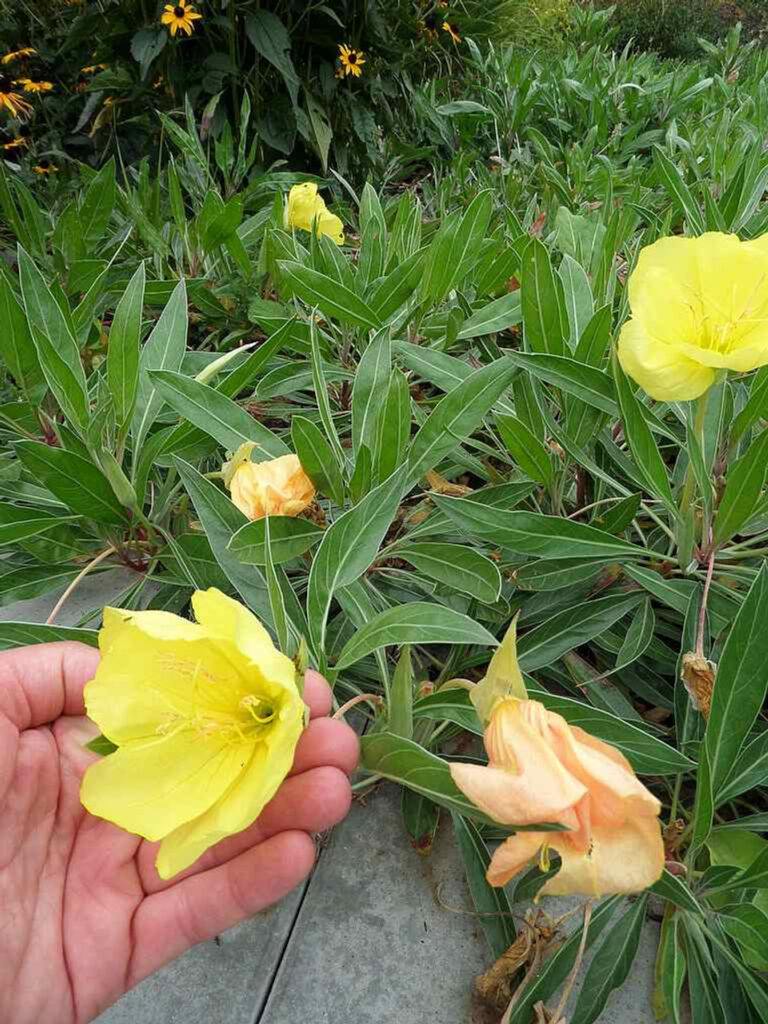When once the sun sinks in the west,
And dewdrops pearl the evening’s breast;
Almost as pale as moonbeams are,
Or its companionable star,
The evening primrose opes anew
Its delicate blossoms to the dew;
And, hermit-like, shunning the light,
Wastes its fair bloom upon the night,
Who, blindfold to its fond caresses,
Knows not the beauty it possesses;
Thus it blooms on while night is by;
When day looks out with open eye,
‘Bashed at the gaze it cannot shun,
It faints and withers and is gone.
– John Clare (1793-1864)
If you skipped the sonnet because it’s too long, go back and read it. Out loud.

I love April’s botanical rave. If it rains overnight and the sun comes out the next day, life erupts from the soil with astonishing speed.
Some of the most beautiful Spring plants and flowers are short-lived. They have a single purpose, and a short window in which to fulfill it; bloom, get pollinated, and get on with it.
Some last a few weeks, like snowdrops. Bloodroot might last a week or so, but as soon as they are pollinated they start to drop their petals.

Pasque flowers usually bloom right around Easter, hence the name; Pasqua in Italian, Pascha in Latin. which comes from Hebrew for passover. I suppose Passover flowers would be as good a name as any. They’re fuzzy to protect them from late frosts.
These plants are ephemeral. That’s from the Greek ephēmeros, which means “lasting a day.” So while not accurate per se, it’s truth-adjacent. If I skip a day walking around in the yard where they were planted, I’m likely to miss some of them.
I love Trout lilies too. These are common in the woods, poking up through the carpet of leaves covering the forest floor. Their speckled leaves remind me of brook trout. They bloom for a week or maybe a little longer. The leaves stick around a few days more, but then wither and die off, totally disappearing until next year.
We’re paddling the Kickapoo River today. The trees haven’t leafed out yet but there’s a haze of green if you squint at the maples, and a few willows got an early start. This giant patch of Virginia Bluebells is near Wildcat Mountain State Park. This picture was from a few years ago, but I’m hoping by the time you read this I’ll know for sure if they’re up or not. The plants stick around, but the flowers don’t last long. Perhaps they’re quasi-ephemeral. I dunno.

Many years ago I was walking around in a botanical garden in Boise Idaho, killing a few hours before our flight, and I saw a primrose blooming. It wasn’t an evening primrose, but at once the poem came to me.
When once the sun sinks in the west…
“What?” asked Stephanie. I realized I was quietly mumbling the poem. I continued to recite it, which was shocking to me as much as anyone, since I hadn’t thought about it in decades.
When I was an undergrad back in the 80s at UW Madison, I sang in the UW Madrigal Singers. 26 voices, a very intimate group, and you had to listen carefully to your fellow vocalists to blend into one voice. We sang Five Flower Songs, one of which was the John Clare poem, set to beautiful music by Benjamin Britten. When you rehearse a piece like that countless times, it get burned into your brain. 35 years later, there it was.
…it faints and withers, and is gone…

Not five minutes later, I received the phone from a friend. She told me that her son’s child had passed away. His child was born with microcephaly, and the doctors thought he’d live maybe a day after his birth. Against the considerable odds, he lived almost 18 months; ephemeral as humans go. I would officiate at his funeral.
He was a squooshy baby, with almost no muscle tone, so holding him was a sensory experience. Just a big soul in a little body, his little brain doing the best it could and his little heart beating against all the odds. It was always touch-and-go with him; and he spent a good deal of time with doctors and other medical staff.
Fair Daffodils, we weep to see
You haste away so soon;
As yet the early-rising sun
Has not attain’d his noon.
Stay, stay,
Until the hasting day
Has run
But to the even-song;
And, having pray’d together, we
Will go with you along.
We have short time to stay, as you,
We have as short a spring;
As quick a growth to meet decay,
As you, or anything.
We die
As your hours do, and dry away
Like to the summer’s rain;
Or as the pearls of morning’s dew,
Ne’er to be found again.
Robert Herrick (1591-1674)
Herrick’s poem was set to Britten’s music as well. While The Evening Primrose was sung quietly with reverence and an ethereal beauty, Fair Daffodils was boisterous and discordant.
We die, as your hours do, and dry away…
By the time we get home in a few days, there’s a good chance that many of the ephemerals in our back garden will have fainted, withered, and gone. But while the petals of the bloodroot will have fallen, there will still be a stalk with an elongated seed pod on it. If the flower was pollinated, the seed pod will swell and burst, and each seed will have a fatty little treat on it called an elaisome. Ants love lipid-rich elaisomes, so they’ll drag the seed down to their colony, and after eating the treat, will drop it in the trash heap to sprout, and it all starts over again.
It faints and withers, but it’s not really gone. It’s just getting read for another cycle of rebirth.
I recited Clare’s sonnet at Kent’s funeral. He had a natural burial in a beautiful forest, wrapped in his baby blanket. His grave is covered with ephemerals.
It seems fitting.
